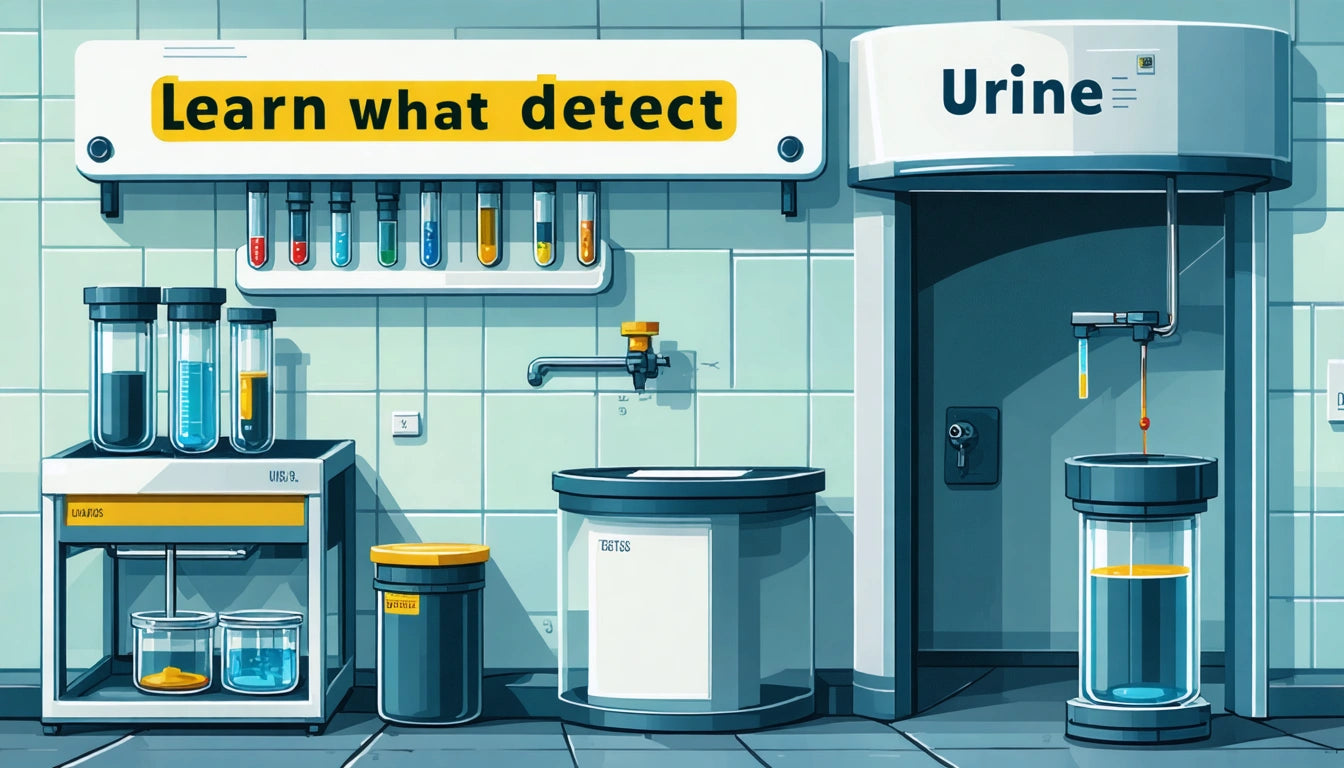Table of Contents
- What is a Urinalysis Test: Basic Components and Types
- What Do Urine Tests Check For: Detection Capabilities
- How Urine Tests Work: The Testing Process Explained
- POCT Urine Testing: Rapid Results in Clinical Settings
- Home Urine Testing Options: Accessibility and Considerations
- Factors Affecting Urine Test Accuracy and Reliability
- Preparation Strategies for Accurate Urine Test Results
Understanding Urine Tests: What They Detect and How They Work
Urine testing remains one of the most common and versatile diagnostic tools in modern medicine. From routine health screenings to specialized drug testing, urinalysis provides valuable insights into bodily functions and potential health concerns. This comprehensive guide explains what urinalysis tests detect, how different testing methods work, and what to expect during the testing process.
What is a Urinalysis Test: Basic Components and Types
A urinalysis test, commonly referred to as a urine test, is a diagnostic examination that analyzes the physical, chemical, and microscopic properties of urine. These tests serve as valuable screening tools for detecting various health conditions, monitoring existing medical issues, or assessing overall wellness.
Standard urinalysis typically includes three main components:
- Physical examination: Assesses color, clarity, odor, and specific gravity (concentration)
- Chemical examination: Uses dipstick tests to detect substances like protein, glucose, ketones, blood, and pH levels
- Microscopic examination: Identifies cellular elements such as red blood cells, white blood cells, crystals, bacteria, and casts
Beyond standard urinalysis, specialized tests target specific substances or conditions. Urine drug tests screen for illicit substances, while pregnancy tests detect human chorionic gonadotropin (hCG) hormones.
What Do Urine Tests Check For: Detection Capabilities
Urine tests can detect a remarkably wide range of substances and indicators. Understanding what can be detected in a urine test helps clarify why these tests are so widely used.
Medical Conditions and Health Indicators
- Diabetes (glucose presence)
- Kidney function (protein levels, specific gravity)
- Liver function (bilirubin)
- Urinary tract infections (bacteria, white blood cells)
- Dehydration (concentrated urine)
- Pregnancy (hCG hormone)
Substances and Metabolites
Urine drug screens commonly test for:
- Cannabis (THC metabolites)
- Cocaine
- Amphetamines
- Opioids
- Benzodiazepines
- Barbiturates
- Alcohol metabolites
Many people are surprised by what a urine drug screen tests for, as detection capabilities have expanded significantly in recent years.
Highlight: Urine tests can detect substances days or even weeks after use, depending on the specific substance, testing method sensitivity, and individual metabolic factors.
How Urine Tests Work: The Testing Process Explained
Understanding how urine tests work involves recognizing the scientific principles behind different testing methodologies. Most tests rely on chemical reactions or immunoassay technology to detect specific substances.
Collection Methods
The reliability of results begins with proper collection:
- Random specimen: Collected at any time, most common for routine testing
- First morning specimen: Most concentrated sample, ideal for detecting low levels of substances
- Clean-catch midstream: Reduces contamination, used for bacterial culture
- 24-hour collection: Measures substances excreted over a full day
For accurate measurements of certain substances, precision measurement tools similar to those used in laboratory settings can help ensure proper sample volumes when collecting specimens for specialized testing.
POCT Urine Testing: Rapid Results in Clinical Settings
Point-of-Care Testing (POCT) provides immediate results during a clinical visit. Understanding what is a POCT urine test helps patients recognize this increasingly common testing approach.
POCT urine tests typically use:
- Dipstick technology with color-changing pads
- Automated readers for standardized interpretation
- Rapid immunoassay cartridges for specific substances
These tests offer several advantages:
- Immediate results (typically within minutes)
- Reduced laboratory workload
- Faster clinical decision-making
- Improved patient experience
However, POCT tests generally have lower sensitivity than laboratory-based tests and may require confirmation testing for certain applications.
Home Urine Testing Options: Accessibility and Considerations
For those wondering "can you get a urine test" without visiting a doctor, the answer is yes. Home testing kits are widely available for various purposes:
- Pregnancy testing
- Urinary tract infection screening
- Glucose monitoring
- Ketone detection
- Drug screening
When selecting the best home test for blood in urine or other conditions, consider factors like FDA approval, sensitivity levels, ease of use, and whether follow-up laboratory confirmation is recommended.
Many people also ask "can you order a urine test" directly. Several options exist:
- Direct-to-consumer laboratory services
- Telehealth providers
- Online testing services
- Pharmacy-based testing programs
Factors Affecting Urine Test Accuracy and Reliability
Several factors can affect urine test results, including:
- Hydration status: Diluted samples may produce false negatives
- Medication interactions: Some medications can interfere with testing
- Sample contamination: Improper collection can compromise results
- Timing of collection: Detection windows vary by substance
- Testing methodology: Different tests have varying sensitivity levels
- Individual metabolism: Affects how quickly substances are processed
Understanding these variables helps explain why results sometimes differ between testing instances or methodologies.
Preparation Strategies for Accurate Urine Test Results
For those asking "how do you do a urine test" or "how to pass a urine test for DOT," proper preparation is essential for accurate results. Medical professionals recommend:
- Following all pre-test instructions provided by healthcare providers
- Disclosing all medications and supplements being taken
- Maintaining normal hydration (neither excessive nor restricted)
- Using proper collection techniques
- Avoiding potentially interfering foods or substances before testing
For employment or regulatory testing, understanding the specific testing protocols helps ensure compliance with requirements.
While some sources discuss methods for manipulating test results, it's important to note that tampering with specimens for official testing can have serious legal and professional consequences.
Understanding how urine tests work provides valuable context for both routine health monitoring and specialized testing scenarios. As testing technology continues to evolve, staying informed about detection capabilities and testing methodologies helps individuals navigate the increasingly complex landscape of urinalysis.











Leave a comment
All comments are moderated before being published.
This site is protected by hCaptcha and the hCaptcha Privacy Policy and Terms of Service apply.